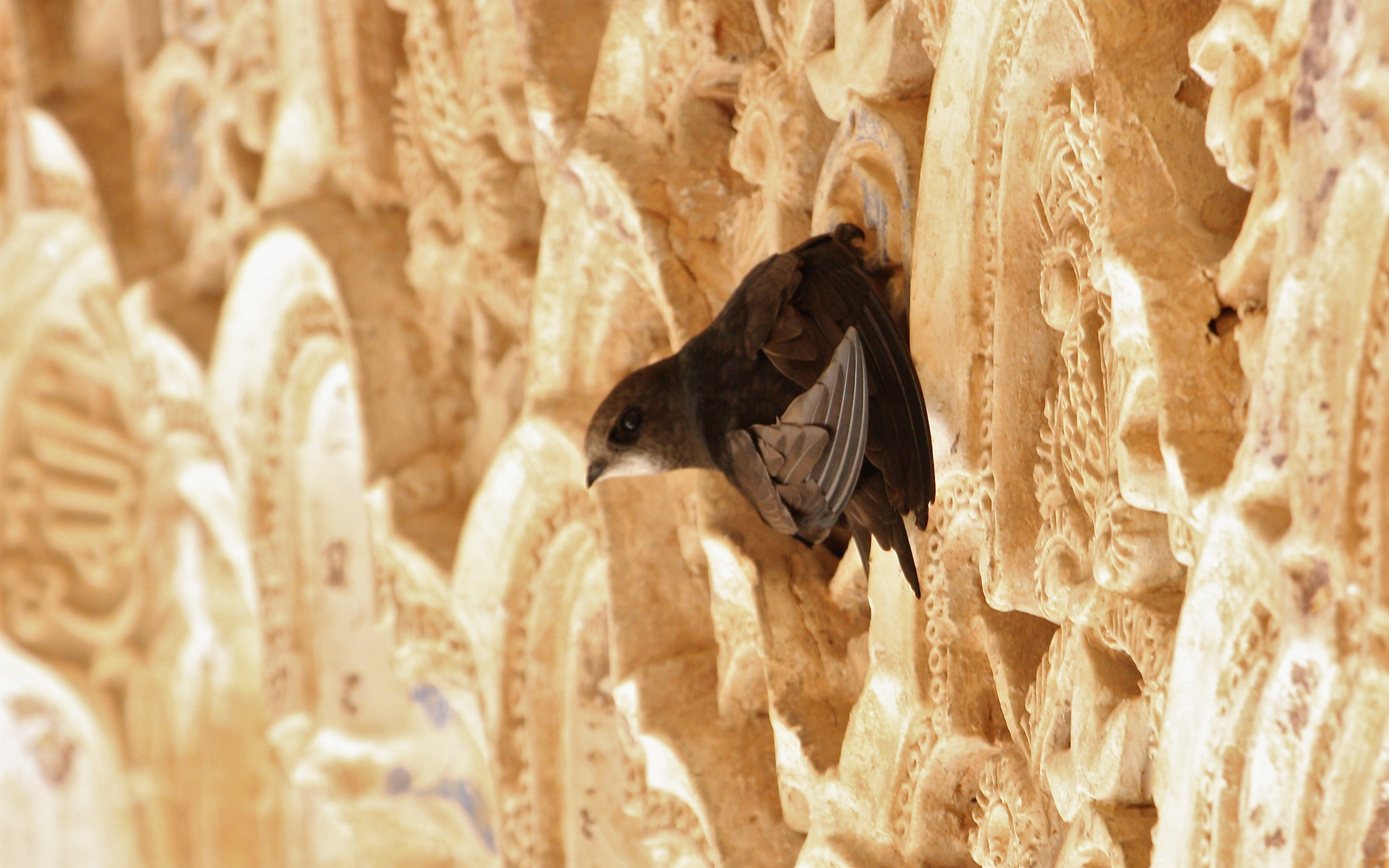‘These sculptures are a melancholy time capsule of songs that act as totems to remind us how fragile our relationship with nature is. The birds’ songs are memorialised as sculptures. By reading the shape of the sculpture we can reconstruct the sound in our mind.’
- Andy Holden
 Swift
Swift
Claimed as one of the fastest birds in level flight, our Swift spends more time in Africa when not breeding than it spends in the Netherlands during its short nesting season between May and August. It is sooty brown with a paler chin. Once known in British folklore as the 'devil bird' perhaps due to its aerial screeching, its wings are long and scythe-like and the tail is short with a small fork. Flight is rapid, flickering and slicing with long glides. It does not land except for nesting.
Song
‘Scream’ is the word most often used to describe the Swift’s call but it in no way does it justice. This is the sound of sheer exuberance, of letting go, an adrenalin-filled ‘scream if you want to go faster’ sound as small flocks dash recklessly around the rooftops on their black scimitar wings, injecting energy into hot summer’s evenings.
The calls are high pitched and have an audible fizz about them ‘shchreeeee schreee schreeeeeeeee’. Seize the moment to revel in the sound, for the Swifts are here only from May to the very beginning of August and are then gone, heading way south and not touching down again until they return to their ‘cliff-face’ nestholes under the eaves next year.
Listen to the birdsong
Conservation
Across its wide range of Europe and Asia the local and regional population fluctuations are not yet significant, but in parts of Northwest Europe the Swift may be in trouble. In Britain it is considered to be in ‘strong decline’, decreasing by over 50% in some areas, and now in the Netherlands a decline has also been recorded. Changes to weather patterns, lack of insect food and a shortage of nest sites have contributed to its decline. So far this is relatively small, and the bird may have been helped by the special construction of ‘Swift towers’ in various parts of the country.

Background to the sculptures
Andy Holden (Bedford 1982) has a special interest in birds and often works with his father, Peter. Peter Holden (London, 1948) used to work for the Royal Society for the Protection of Birds and set up the annual garden bird watch in the U.K.
For the Auguries, Andy Holden identified a number of birds native to the British Isles that are in decline: the Yellowhammer, the Swift and the Mistle Thrush. The sculptures are three-dimensional representations of oscillograms, wave forms generated by recording the unique song of each bird. Wave forms of sound recordings are normally viewed horizontally; however, the sculptures are displayed vertically, pointing up towards the sky.
Each sculpture is cast in bronze, recalling the public sculptures of Henry Moore (Castleford 1898 – Much Hadham 1986) and Barbara Hepworth (Wakefield 1903 – St. Ives 1975), who would sometimes take natural elements such as stones or flint as the starting point for their public works. The sound of each bird becomes a solid form and given the long life of bronze the sculptures could outlive the species they represent, becoming memorials to sounds that are no longer audible to future generations.
The species represented here were inspired by references in Charles Waterton’s (Walton Hall, 1782 – West Yorkshire, 1865) notebooks, and because they are species in rapid decline throughout the U.K. and in parts of Europe. The Swift, for example, has declined by over 57% in the last 25 years in parts of the U.K, and the Yellowhammer’s numbers have halved in the U.K in the past forty years. In the Netherlands many species that breed in farmland are in trouble: “Since the 1990s… the number of farmland birds has halved” (The State of the Netherland’s Birds 2022, Sovon).
The artwork is called Auguries because the ancient Romans used birds to predict the future. Augur means to portend to a good or bad outcome, or to foretell.
Throughout history observing birds has taught us about the world around us and helped us make predictions for the future. In 1962 American author Rachel Carson (Springdale, 1907 – Silver Spring, 1964) wrote Silent Spring, a book that began with her observations about the decline in bird song and lead her to identify the destructive effect the widespread use of pesticides was having on the countryside and the food chain. Her book sparked the environmental movement across the world.


